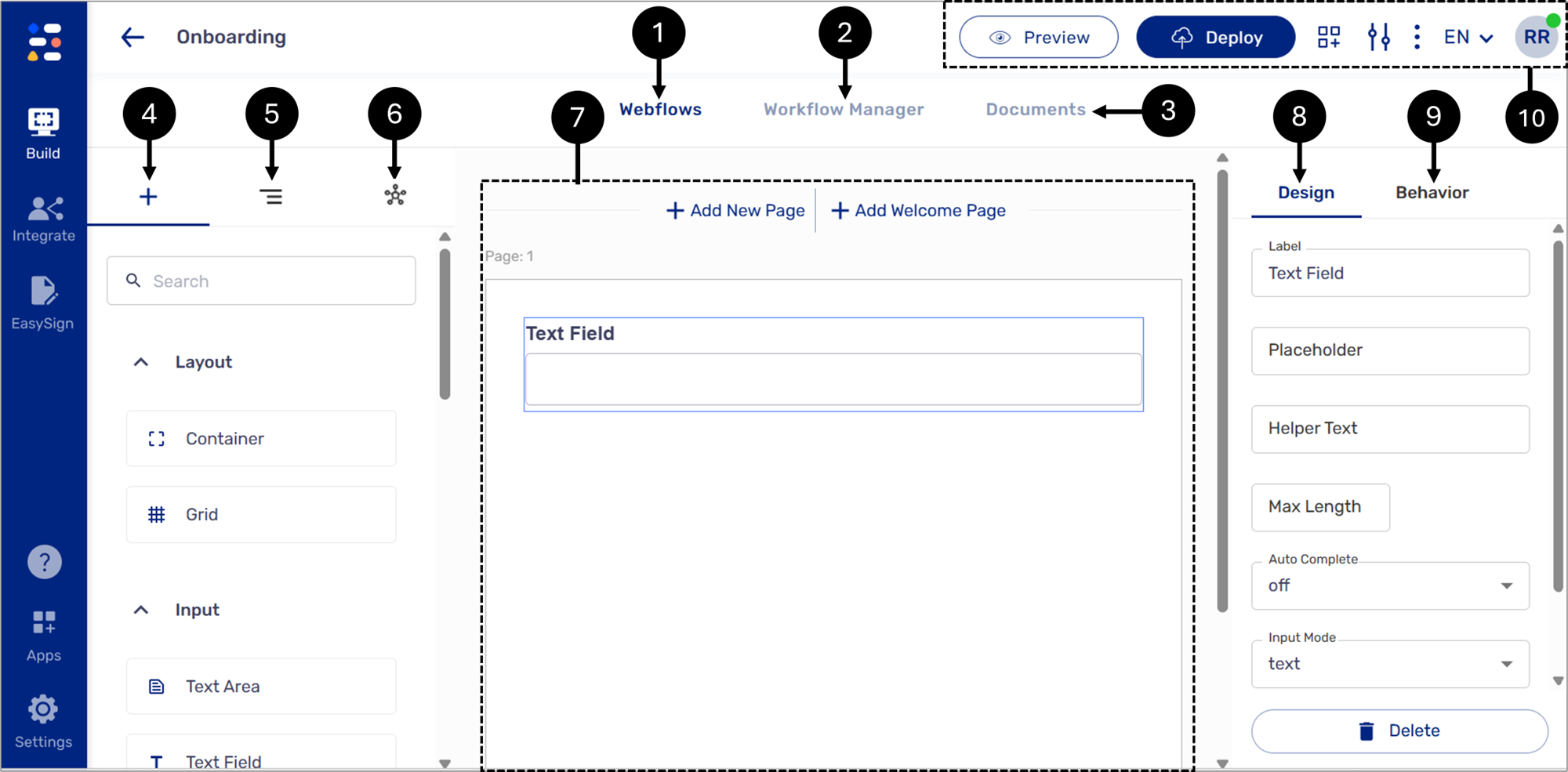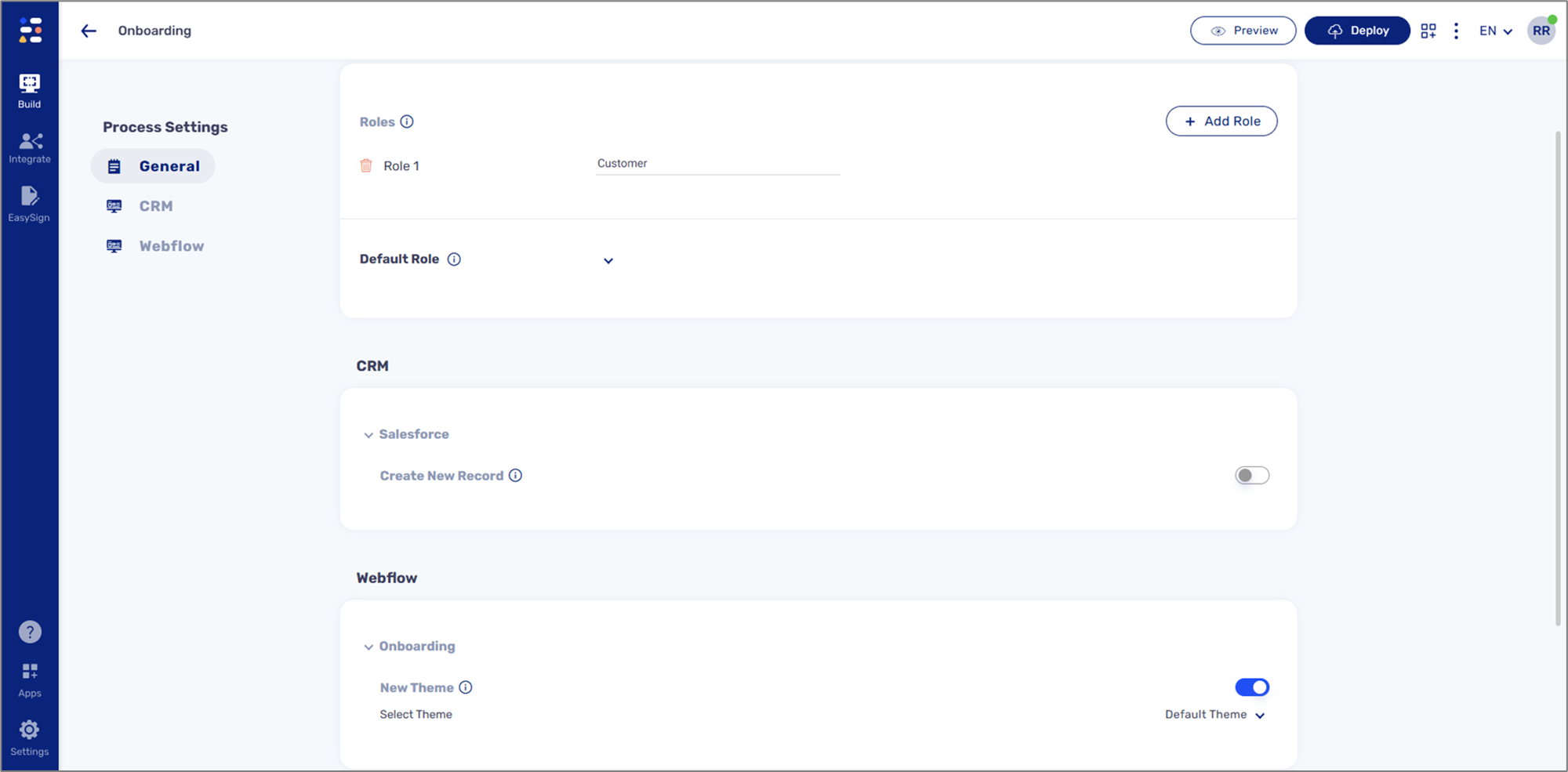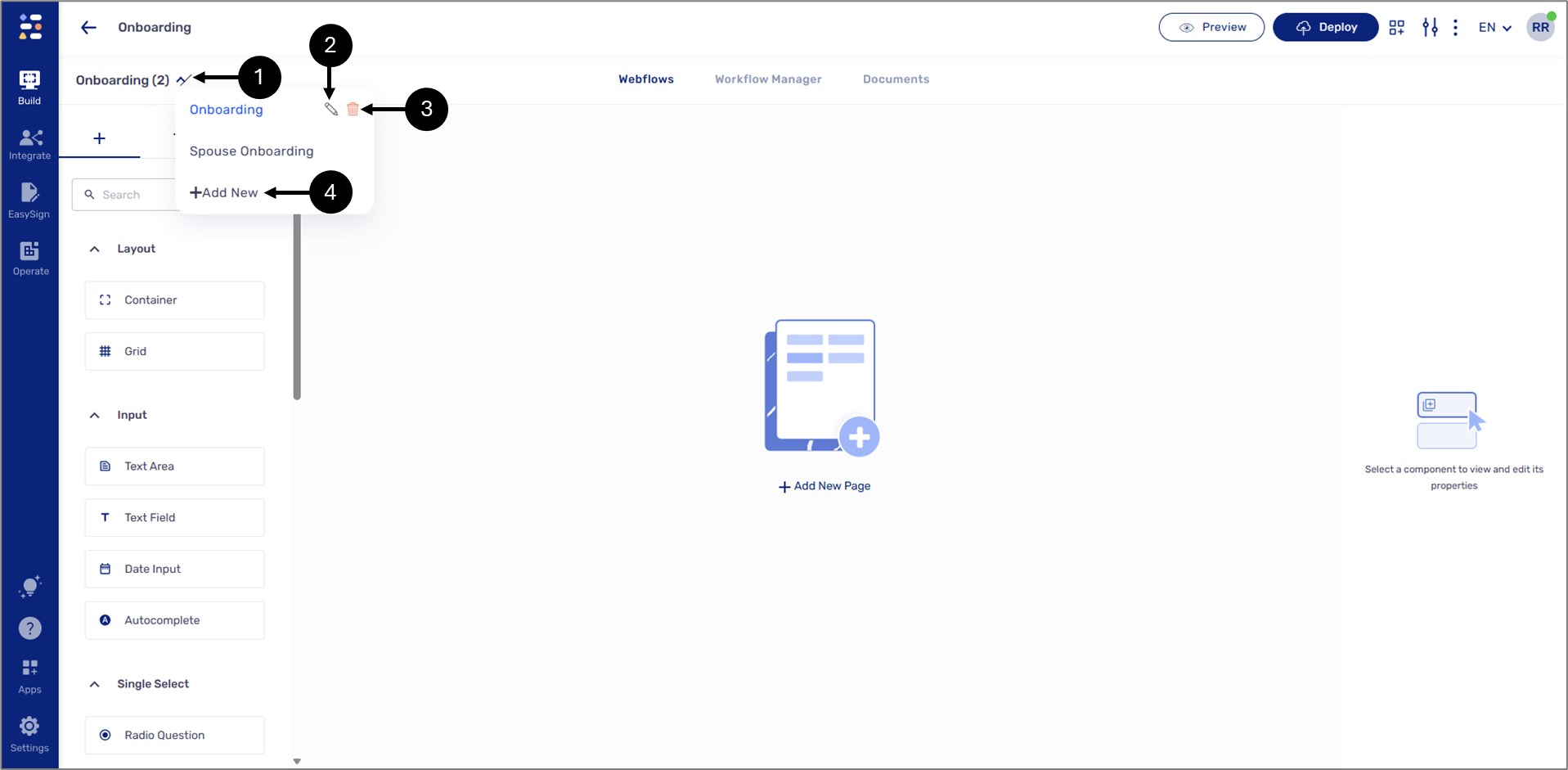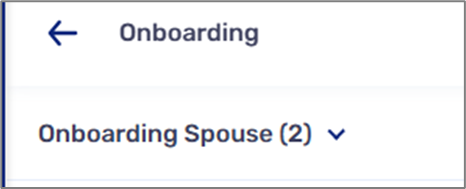- PDF
Webflow Structure
- PDF
Article Overview
The following article describes the structure of a Webflow.
Structure Overview
(See Figure 1)
An AI-generated Webflow is comprised of the following icons, sections, and tabs:
- Webflows tab - Displays the Webflow screen.
- Workflow Manager tab - Displays the Workflow Manager screen.
- Documents tab - Displays the Documents screen.
- Components
 - when this icon is clicked, the left section displays a list of components. The components are used to build the physical structure of a digital process.
- when this icon is clicked, the left section displays a list of components. The components are used to build the physical structure of a digital process.
- Navigator
 - when this icon is clicked, the left section displays the logical structure and hierarchy of the components that were added to the canvas.
- when this icon is clicked, the left section displays the logical structure and hierarchy of the components that were added to the canvas.
- CRM
 - when this icon is clicked, the left section displays fields for CRM integration.
- when this icon is clicked, the left section displays fields for CRM integration.
- Canvas - this section contains the added components.
- If a process is not created from scratch, the canvas will automatically contain added components.
- All components besides the page are added by drag and drop.
- Design tab - when this tab is clicked, the right section displays the Design properties of a selected component.
- Behavior tab - when this tab is clicked, the right section displays the options to add conditions and validations.
- The upper section - contains different options and buttons.

- Figure 1: Webflow Structure
The Upper Section
(See Figure 2 and Figure 3)
The upper section allows you to access the Process Settings screen (1), where you can create roles, set a default role, select from different themes for your process, and configure your Salesforce integration. Additionally, the upper section features a button to deploy (2) and a button to view a preview (3) of the process.

- Figure 2: Upper Section

- Figure 3: Process Settings Screen
Adding/Editing/Deleting Webflows
(See Figure 4)
To add, edit, or delete a Webflow, click the Webflow dropdown (1) and select one of the options:
- Edit (2) - rename the Webflow.
- Delete (3) - remove the Webflow.
- + Add New (4) - add additional Webflow.

- Figure 4: Process Link

Deploy and Preview
(See Figure 5)
Deployment and preview refer to the process of publishing a digital process. They can be performed at various stages of development - for example, a user may deploy and preview the process for quality assurance testing or when it’s ready to be shared with the world. When a deployment process ends, it will display an indicator:
- Successful deployment

- The deployment process failed with errors

- The deployment process passed, but with warnings

After a successful deployment from the Webflows screen, a link to the process becomes available for copying and pasting.

- Figure 5: Process Link


